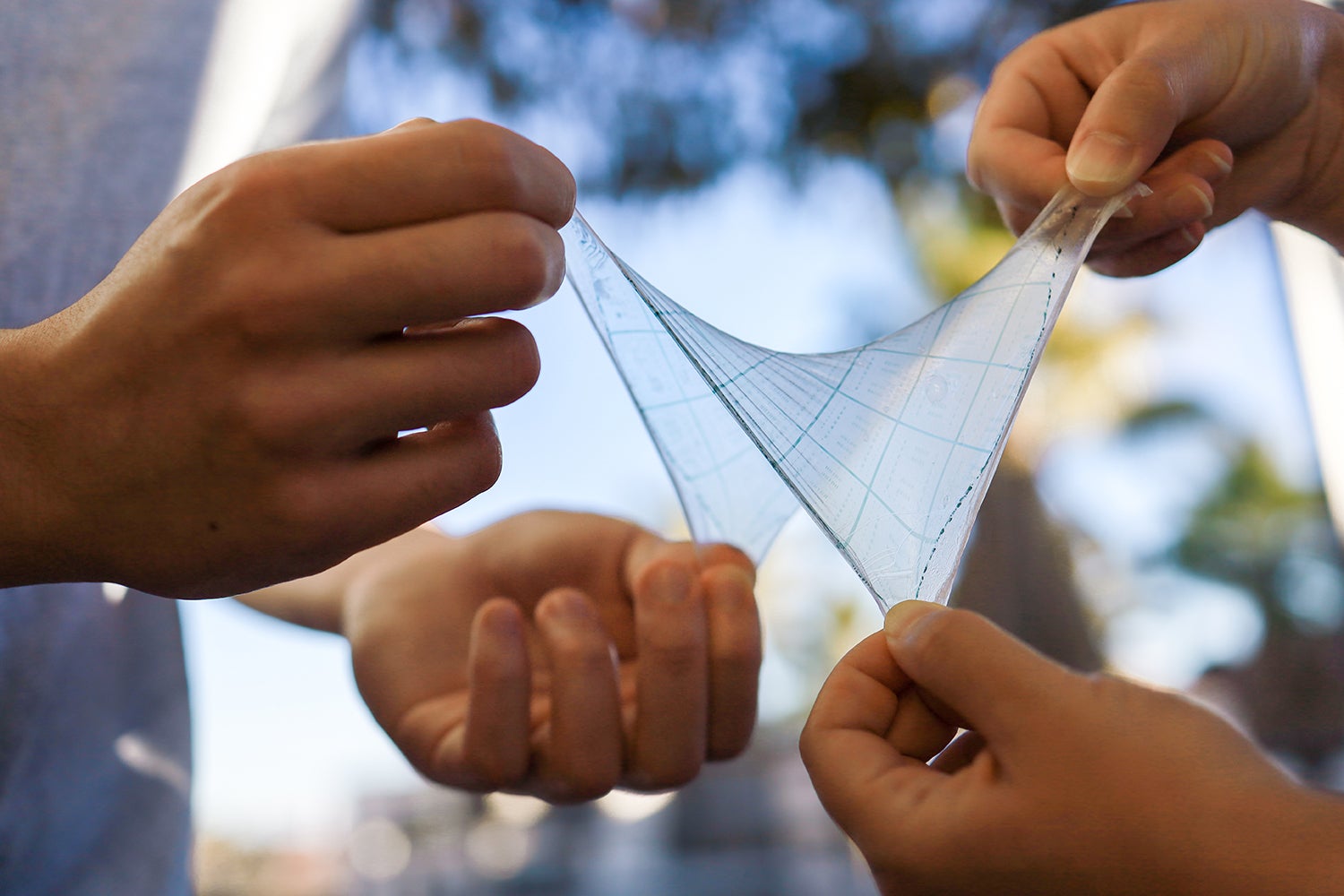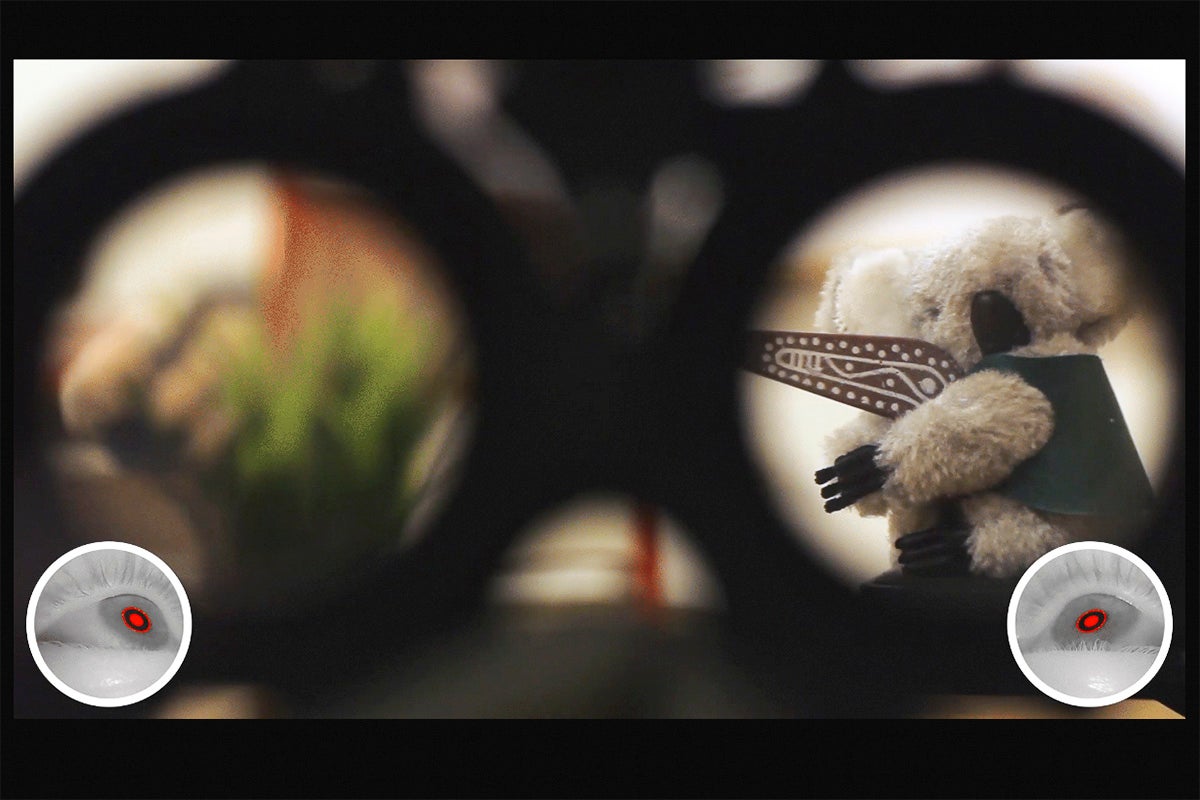As technology continues to get smaller and smarter, the world of wearable technologies grows larger. Many people already own devices that can monitor their movement, heartbeat and sleep – but what about a watch that can tell when you’re sick or an exoskeleton that can predict and prevent falls? Such inventions may be in our future if current Stanford University research is any indication.
In order to get the most out of future wearables, researchers are studying all stages of their design, production and use. This includes not only making new kinds of wearable devices but also innovating how they are fabricated and making sure existing wearables live up to their exciting promises.

Lab mates in the Bao Research Group at Stanford demonstrate the flexibility and stretchability of their artificial skin made using their newly created printing method. (Image credit: Yuqing Zheng)
Constructing wearables
A new system for measuring calories burned during activity features two sensors on the thigh and shank that are powered by a battery and controlled by a microcontroller, which could be replaced by a smartphone. (Image credit: Andrew Brodhead)
Exploring the potential of current wearables

Stanford engineers are testing a pair of smart glasses that can automatically focus on whatever you're looking at. (Image credit: Robert Konrad)
























